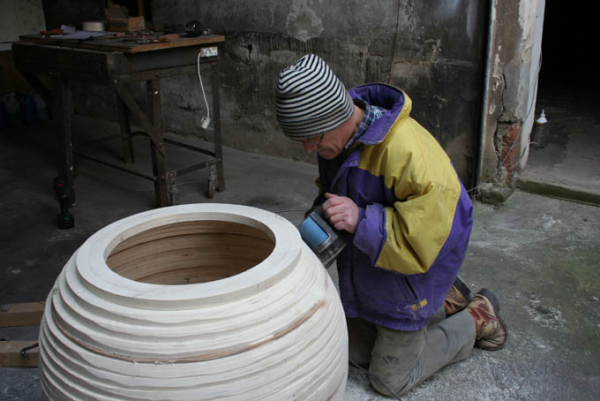It was a couple of weeks ago now that I saw Étienne Ghys deliver a lecture titled On cutting cloth, according to Chebyshev at Newcastle University, as part of his lecture tour as Hardy Fellow for 2012. I had no idea what the talk was about and only a faint idea of who Prof Ghys was but I was persuaded to go by my ex-supervisor, who also happens to be Newcastle’s LMS rep. It turned out to be an enormously interesting and entertaining talk on a very accessible problem (in the sense that you can easily understand what the problem is and why the solution works, if not how you get there) by one of the most eminent mathematicians working today.
Here’s how the LMS describes the Hardy lectureship: (there was some debate at the talk about whether the position is a lectureship or a fellowship, but the point is fairly moot)
The Hardy Lectureship is named after G.H. Hardy, former President of the Society and De Morgan Medallist. It is awarded in even numbered years, to a distinguished overseas mathematician.
The Lecturer visits the UK for a period of about two weeks, and gives the Hardy Lecture at a Society meeting, normally held in London in July. The Lecturer also gives at least two other lectures, on different topics, at other venues in the UK; the schedule is decided by the Programme Secretary in consultation with the President and the Lecturer, and is designed to allow as many UK mathematicians as possible to benefit from the Lecturer’s presence in the UK.
The visit to Newcastle was the last stop on the first leg of the tour. The second leg began on the 25th in Bristol (sorry, I really meant to get this post written before then!), followed by visits to Warwick and Reading. The tour ends in London on Friday the 29th with a repeat performance of On cutting cloth, according to Chebyshev at UCL. That talk will be preceded Vincent Borrelli talking about flat tori in three-dimensional space, covered here previously. I highly recommend that you attend, if you can.
I don’t want to spoil the talk, so I’ll just include these pictures from his slides that Prof Ghys sent me, as a taster.

Diagram of a piece of cloth which covers the sphere completely without gaps or overlaps.

The same bit of cloth wrapping round a sphere. Still from an animation produced by Étienne Ghys and Jos Leys.
A full explanation, with rather a lot of aesthetically pleasing maths, is your reward for attending the talk.
Ghys said he has been collaborating for a while with an artist called Pierre Gallais, who was inspired by this theorem about cloth-cutting to try and realise it in wood and steel. Here’s a picture of M. Gallais constructing a rather large wooden ball.

You can see more of Pierre Gallais’ work at his site, Institut de Mathologie. His Surfaces Seinpathiques are pure genius. (warning for the easily-titillated: sein is French for “breast”, and there are lots of them on Pierre’s site)
Ghys has written a French-language introduction to Gallais’ work on the CNRS’s excellent site images des mathématiques.
Finally, Étienne told me that he is one of the main/only contributors to the site Blackboard of the Day, whose mission is hopefully self-explanatory. There are some great pictures on the site, including this one of a blackboard at the Tata Institute of a kind which Prof Ghys was amazed to find is fairly common in the UK!.
Information:
LMS Hardy lectureship 2012 – lecture dates and titles
The final MS Hardy lecture 2012 at UCL
Étienne Ghys’ academic homepage